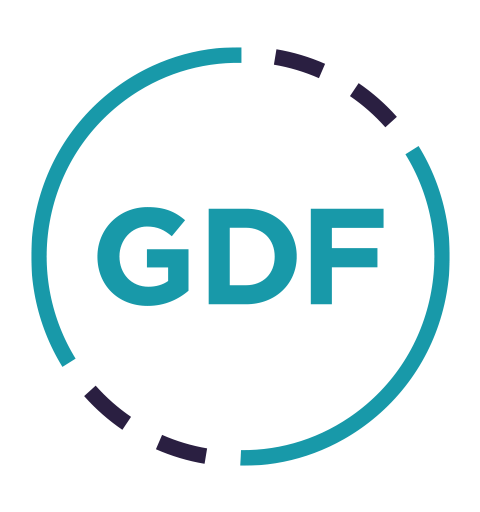Getting the “Trifecta” Right in Creating Optimal Digital Assets Regulation
Blog by Carl Schonander GDF Head of Americas Regulatory Affairs.
GDF Board Member Jeff Bandman hosted a deeply substantive conversation with Wyoming State Bank Commissioner Albert Forkner on July 19, 2021. If you missed it, you can view the recording here (link). Forkner emphasized that to be a state digital assets leader, appropriate legislation, regulation, and supervisory frameworks are needed, which he called the “Trifecta”. This must be combined with ensuring that players understand how the Uniform Commercial Code (UCC) interacts with these elements. Forkner was also very interesting in explaining Wyoming’s blockchain history, his personal journey from crypto skeptic to enabler, and what helped inform his thinking along the way. On balance, Forker expressed optimism regarding possible federal approaches to digital assets regulation.
Wyoming Division of Banking About a Lot More than Banks: The Division has provided charters to roughly 30 banks that operate in Wyoming. That seems about right for a state with a population of approximately 580,000 people. What is surprising is that the Division licenses about 6,000 non bank entities that provide mortgages, consumer lending, money transmission, rent to own and other Fintech services. This is the part of the Division’s work that has grown the most in recent years.
It Helps to Have a Local Champion: Whatever your general views on the “great woman” or “great man” theory as the driver of history, there is no doubt that Caitlin Long, founder of Wyoming Division of Banking approved crypto bank Avanti Financial, played a pivotal role in promoting the digital assets industry in Wyoming. Commissioner Forkner explained that when Caitlin Long decided to fund an endowment at the University of Wyoming with crypto assets – and the state found it had no way to accept the gift – it was time to do something different. That was what prompted the state to create a multistakeholder blockchain task force, which established the groundwork for the legislation that has put Wyoming in the driver’s seat with respect to the creation of what is, arguably, the most crypto friendly – coupled with appropriate investor and consumer protections – state in the Union.
Legislation, Regulation, Supervision and UCC Part of Crypto Assets Framework: You can read about 13 pieces of Wyoming blockchain enabling legislation here, but the critical piece according to Commissioner Forkner was HB0019, which amended the Wyoming Money Transmitter Act. That meant that crypto to crypto transmissions would not be subject to the Wyoming Money Transmitter Act. The 2019 passage of Wyoming HB0074 permitting the establishment of Special Purpose Depository Institutions (SPDIs) authorizing SPDIs to act as digital assets custodians was critical as well. This depository institution framework for digital assets custody established by this legislation is unlike other states, where crypto custodians are operating under a different type of charter for a non depository institution called a limited purpose trust charter. This legislation, together with regulatory guidance, a unique manual for supervisors, and an understanding of how the UCC interacts with this framework is what has allowed Wyoming to be a leader in the digital assets space. The bottom line is that besides the political will to promote the industry, states also need an integrated detailed approach to digital assets regulation. “Copying and pasting” Wyoming law and regulation might be a necessary, but it is not a sufficient, condition to be successful.
It Helps Regulators if they Understand How Industry Intends to Make Money: Responding to a question, Commissioner Forkner explained what helped inform his thinking about the digital assets industry since 2014. He emphasized:
- engaging with companies subject to regulation;
- talking to stakeholders, for instance through the crypto “Twitterverse;”
- Wyoming crypto champion Caitlin Long was a critical interlocutor;
- exchanging views with federal regulators such as SEC, CFTC, the Federal Reserve Board and the FDIC;
- attending conferences;
- and, last, but not least, understanding how SPDIs would generate revenues.
With respect to the last point, Forkner noted that around 2019, it became clear that a lot of companies effectively wanted to be “money warehouses.” In other words, they wanted to be custodians. This intellectual understanding is what allowed the Wyoming authorities to create a system that protects consumers through stringent balance sheet requirements that allows innovation to happen at the same time.
Feds Acting Constructively According to Forkner
On October 23, 2020, the Wyoming Division of Banking issued a no action letter to Two Ocean permitting it to be qualified custodian for crypto assets. The letter recognizes that the action implicates state and federal laws. On November 9, 2021 the SEC issued a statement noting precisely this point and inviting comments. There is at least perceived tension between an SEC that may want to exercise greater regulatory control over crypto assets versus states that are more inclined towards experimentation. However, the Commissioner was upbeat regarding the federal approach to crypto and indicated that Wyoming’s relationship with the SEC was good. He said he had an excellent conversation with the Fed’s Lael Brainard. Speaking of the Fed, Forkner argued that the solution to providing assurances for stablecoin reserves was to establish segregated accounts at the Fed.
Conclusion
Overall, this was a very substantive conversation about how a state – in this case Wyoming – truly is acting as a “laboratory of democracy” within the U.S. federal-state financial services regulatory framework. Well worth watching if you are interested in learning more about this dynamic.

